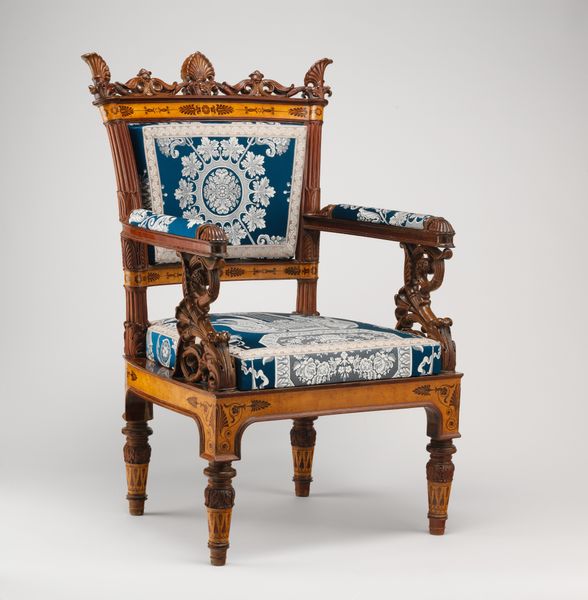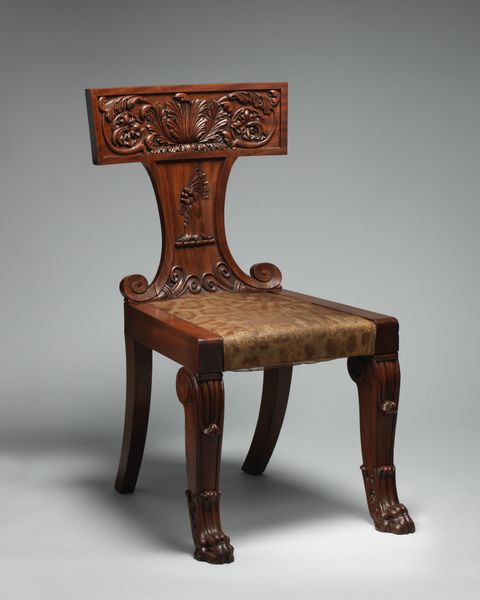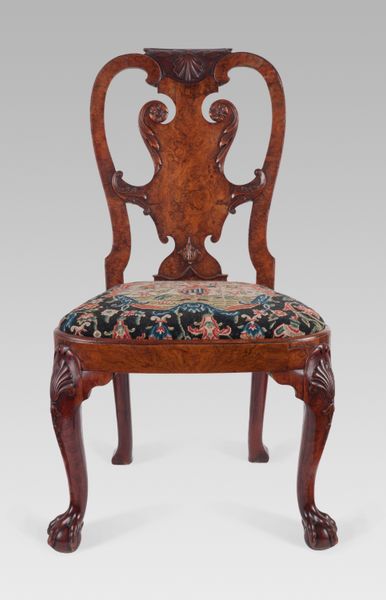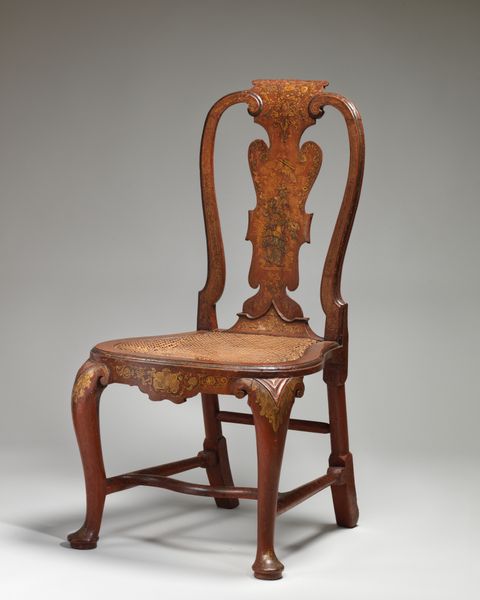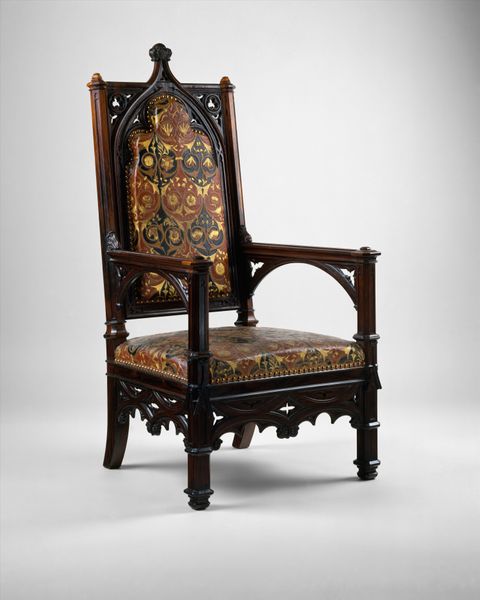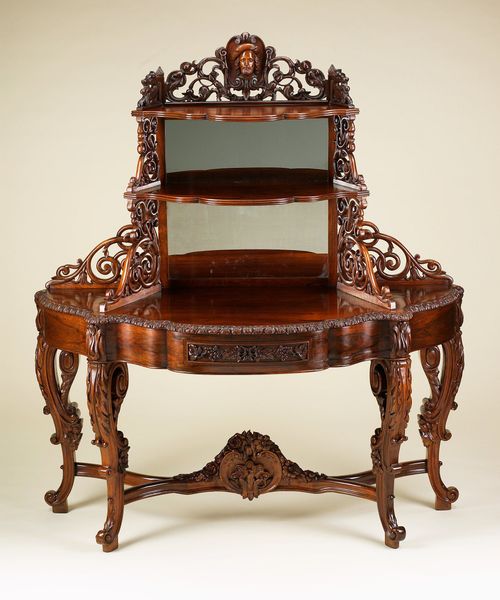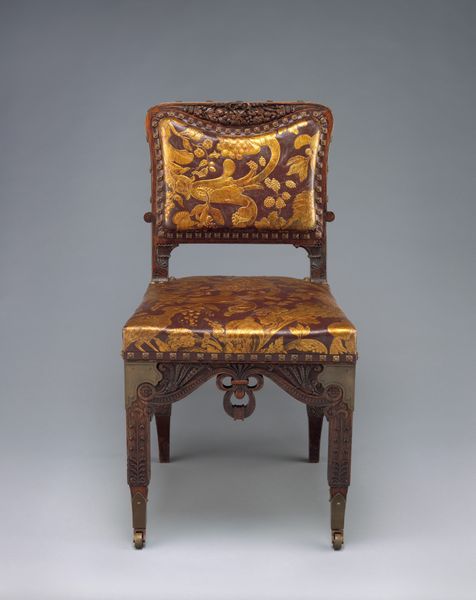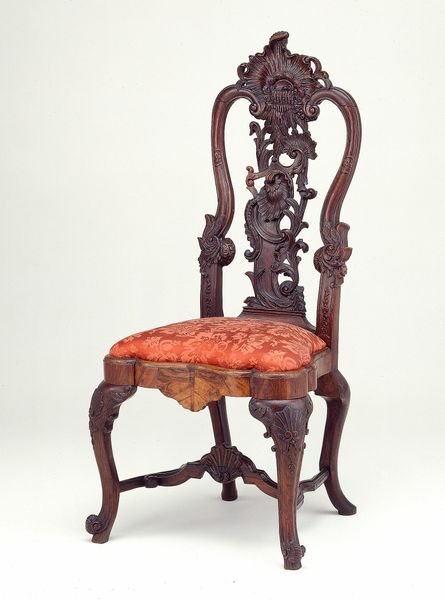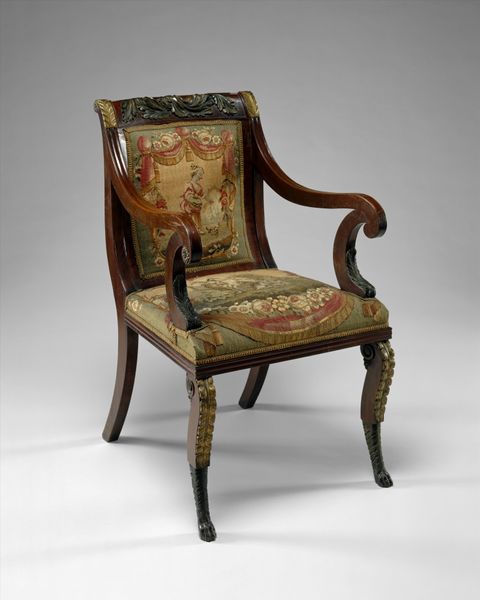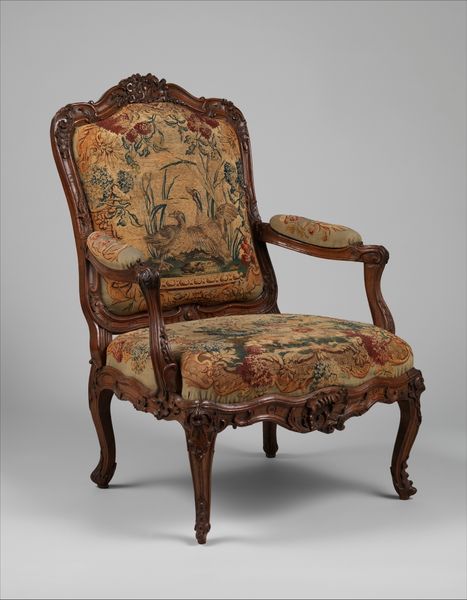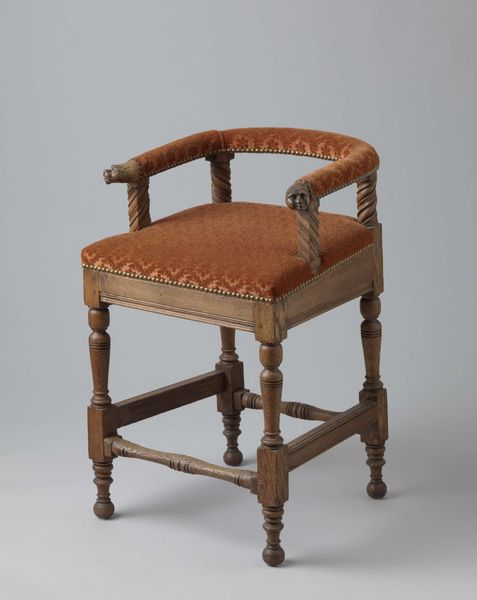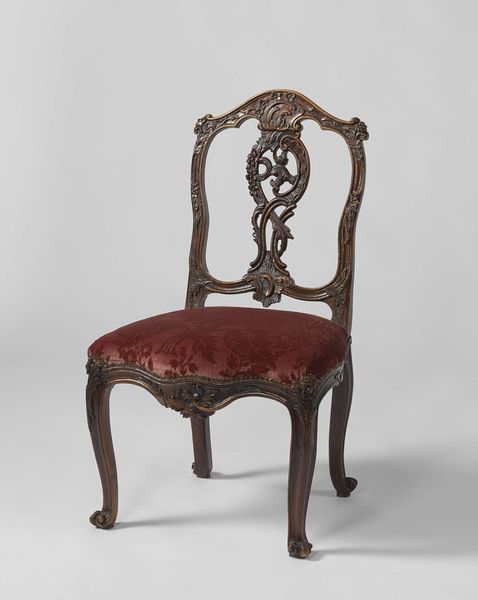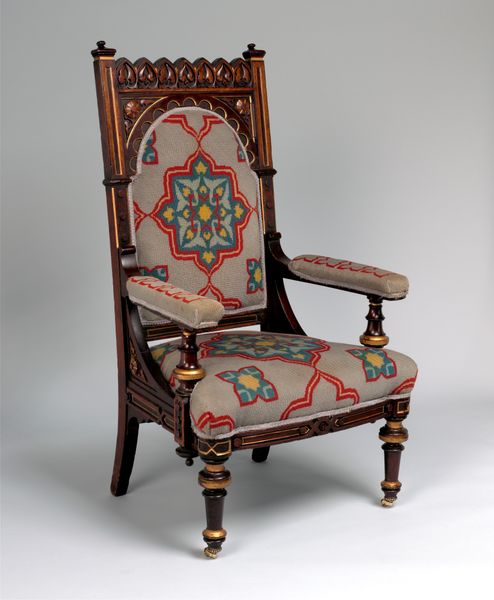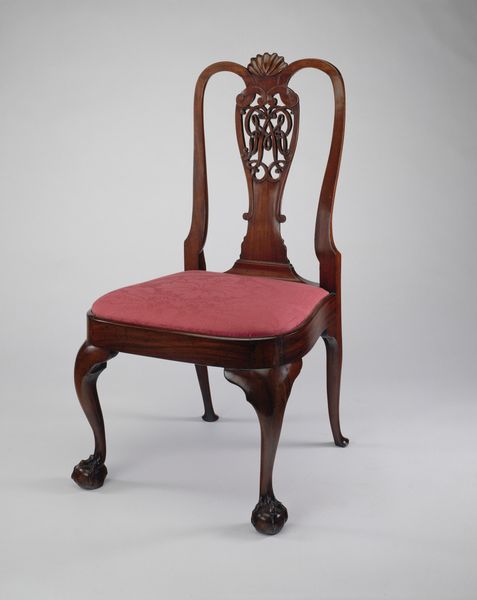
carving, sculpture, wood
#
neoclacissism
#
carving
#
furniture
#
sculpture
#
wood
#
decorative-art
Dimensions: Overall: 43 3/4 × 27 13/16 × 29 1/2 in. (111.1 × 70.6 × 74.9 cm)
Copyright: Public Domain
Curator: Welcome. Before us stands an armchair, crafted from wood between 1815 and 1825. It’s currently held at the Metropolitan Museum of Art. What are your immediate thoughts? Editor: Well, the juxtaposition of highly stylized, almost austere wood carving with that rather brazen leopard-print upholstery makes for an interesting, almost aggressive statement. Curator: Precisely. Consider how the neoclassical elements function: the rams' heads, the lion's paw feet, the fluted supports—they collectively construct a deliberate visual language steeped in imperial authority and refined taste. Editor: Yet it's impossible to ignore the construction; each carved detail speaks to an immense investment of time and the skilled labor required. One can almost trace the movement of the craftsman’s hand as he methodically shapes the material. It makes one think about the workshop and the specific tools employed in bringing such ornamentation to life. Curator: Indeed. Furthermore, observe the symmetry. The back panel’s carved palmettes echo the overall rigidity, further enhanced by its rectangular design. All details merge into a harmonious, almost austere effect, despite the exuberance of its sculptural parts. The wood's original hue also brings into the fore how all these features reinforce each other. Editor: It's worth pausing, however, on the very notion of 'harmony'. How seamlessly does that animal-print integrate with such grand and ancient aspirations? It almost seems to mock notions of seamless fusion when, truthfully, such commodities owe themselves to widespread imperial expansion, and access to new types of upholstery! The leopard clashes in texture but enhances that notion. Curator: I see your point. It's a dialogue, indeed. And finally, don't miss the small details like the carved hand at the center of the chair. The composition masterfully holds visual weight, ensuring it's not overpowered by the aggressive upholstery, but harmonized. Editor: Absolutely. Such seemingly minor choices become profoundly eloquent under scrutiny when analyzing social contexts. All that to say, such works can open paths to discussing histories that exist far away from these objects. Curator: A fine intersection, where materiality and form together open vistas far wider than what initially meets the eye. Editor: Well observed; I concur entirely.
Comments
No comments
Be the first to comment and join the conversation on the ultimate creative platform.
